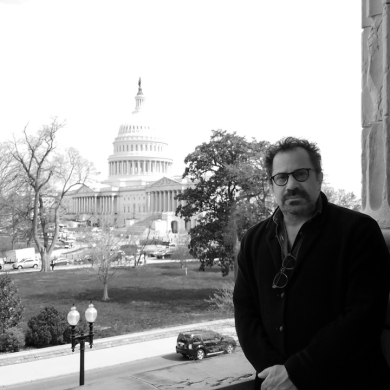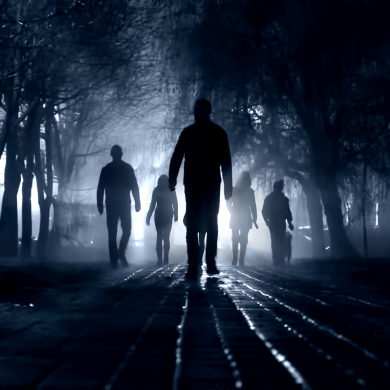Published Date: 08-03-22
Although another Slamdance Film Festival has come and gone, we are always awestruck by all the astonishing talent on display. This year’s short film candidates for the CreativeFuture Innovation Award featured mesmerizing imagery, heartfelt stories, and innovative styles.
But what ultimately won our hearts this year was Hannah Saidiner’s My Parent, Neal – an emotional documentation of a parent’s transition to become who they really are.
A look at the complex and loving relationship between a parent and their child, My Parent, Neal evokes the innocence of youth with its distinct visual style. For its creativity and incredible heart, it deserved the CreativeFuture Innovation Award.
After Slamdance 2022, Saidiner spoke with CreativeFuture about her artistic roots, her creative process, and her plans for the future.
JC TAYLOR: What have you been up to since Slamdance?
HANNAH SAIDINER: I graduated last year, and right after that, I started as an apprentice Illustrator at a company in D.C. called Duke and Duck. We do motion design, but really emphasize animation with a purpose, so it’s a lot of nonprofits and social sector work. It’s perfect for me, because while I was in school, I was making animated documentaries, and a lot of them were about subjects that I really care about. It’s nice to work for a company that also really cares about what they’re making.
I joined the team as a full time Illustrator this year. In the general animation world, I would probably be called a designer. I make storyboards, concept art, and art direction decks. I pitch these to the clients themselves to see what direction they want to go in. I do pre-production artwork before the animation begins, and that part is done by other members of our team!
JC: What first got you into animation?
HS: Well, I grew up in the San Fernando Valley, which was lucky because I was really close to Burbank and the animation studios there. I went with my family to a movie screening on the Disney lot when I was 12 years old and I had this sort of epiphany that this was what I wanted to do for my career.
JC: Do you remember what movie?
HS: Yeah, it was The Princess and the Frog, which was perfect because that was the last big Disney film that used hand-drawn animation. I remember thinking about how this was such a magical movie, and I couldn’t believe that people worked on these films as their jobs, not just for fun! So now, my work doesn’t look exactly like that, but it definitely opened my eyes into animation as a medium and as a career.
JC: You mentioned the job titles Designer and Illustrator. Could you explain a bit about what those different jobs are?
HS: When I was in school, we had to do everything. I was an illustrator, animator, editor, sound designer – that was all me. Now, it’s a little different. I am the designer and someone else does the actual animation.
But I think there were some films at Slamdance where some directors were doing everything, and then there were some that were a huge production. It was interesting seeing all the varieties of ways we can approach it. I had amazing people help on my film (sound designer, composer, animation assistants), but even then, it took me two years to make it.
JC: Two years is quite the commitment! When you decided you wanted to study animation, what was your family’s reaction to that? Were they supportive?
HS: Well, both of my parents were teachers, and creativity was very important to them, so they were very encouraging of me. But I think they already had that mindset that’s like “our field doesn’t really pay much already, so whatever you want to do, we get it.”
In some ways, they were my biggest supporters. My Dad went with me to an animation expo when I was in 11th grade, and there were a few panels where he would push me like, “Go talk to them!”
I started taking animation classes around the middle of high school, and it was kind of great because the people I was learning from were doing more experimental animation, so I was able to learn a lot of different techniques other than the more traditional way of animating.
The first real animated thing I made was this paper puppet piece, just a marionette on strings type of animation. I think it was 15 seconds that I edited in iMovie. But that experience prepared me to learn the more complex techniques down the line.
JC: Tell me about your film My Parent Neal – because although I have seen and love the film, people reading our blogs may not know about it.
HS: When I first came into CalArts, I had already been drawn to these “personal documentaries.” I was writing these stories about my family and things that felt weird and silly and funny in my life. Animated documentary felt like the perfect medium to express them in. My first-year film was about censorship and gender, and I interviewed my Dad just before his top surgery. So, it was something that was constantly on my mind.
When I started my thesis, it was right in the midst of my Dad’s transition.
Some of the conversations we were having were like; “Ok, you need to stop calling me Mama in public,” and maybe harder conversations like; “Why are you still saying it? Is there a reason? Or is it just familiarity and comfort? What is changing over time?” This film just felt like the perfect opportunity to sit down and talk about it, think about it, capture it, and process it, visually, for both of us.
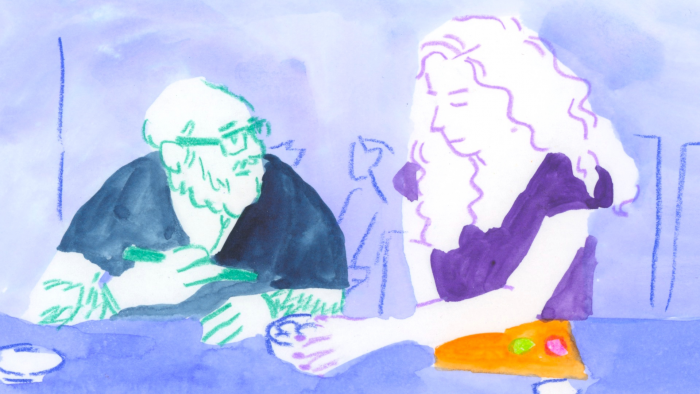
It became something my family could all work on together, where we talked about it in a purposeful manner. And it was great to do it with him, and to do it with my brother who was helping me film everything while we were at home. Even though we were already very close, it was a chance to ask my Dad questions that wouldn’t be asked normally.
I also am at the standpoint where, for most of the work that I make, if I learned something while I did it, the end result honestly doesn’t matter to me as much. If it felt like it was worth making, then I feel happy with the process ultimately.
JC: It sounds like a therapeutic process for you. Was it helpful? Or was it a way to expel energy from any sort of confusion or questions you may have had about everything?
HS: Conversations like that could happen in therapy, and that’s great. But at the same time, it’s different when you’re doing it for a creative outlet.
I interviewed him just before Thanksgiving, so it was a kind of thing where we were just about to go see family and we’re going to be together – there’s going to be a lot of interactions with people who have known him since pre-transition. And so, all of those thoughts felt really present at that time.
It was a nice way for him to say that things are going well for him, and that he’s feeling even better every day. And I think that mattered a lot. At least for me, because I am proud of him. I feel like it was a nice way for him to capture himself, and our relationship.
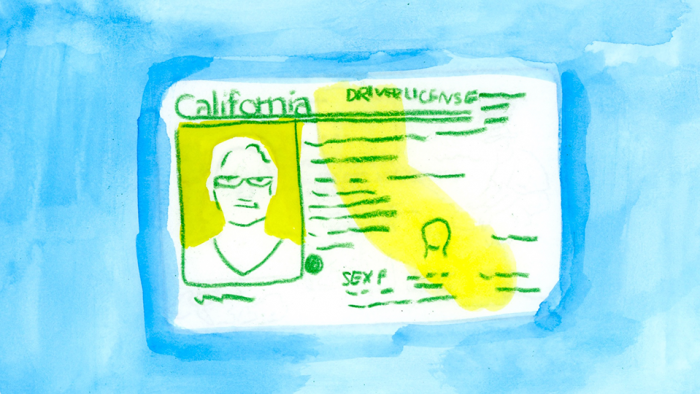
JC: Well for something that took years, it feels like such a concise and compact story. When you are editing this thing together and you are doing the animation, how do you know when you are done? I mean, if you are still getting to know the whole transitional process and still having these conversations with your family, how do you know when to finish the movie?
HS: I think having it be my thesis film was helpful because I had to have it essentially done before I graduated.
We had about five hours of conversation that I spent months editing down, and I wanted to get it to around 8-10 minutes for festivals. It was always a good goal to have – you have these good chunks from the interview that you think are great, and you have to be really selective about what you leave in.
So that was just the sound part of it – I had a time goal. The visuals were tougher.
There was this thing that my mentors would tell me: “Banana, Banana.” That means that if you are hearing about something in the film’s dialogue or voiceover, you don’t want to show the exact same thing on screen. That can feel repetitive. If your narration is about a banana, you normally wouldn’t want to show one, too.
And I was thinking of individual moments like, “Ok, he is talking about how he wants to have a relationship again, and you know there’s a physical aspect of that relationship I could show.”
But moments that I really cherish with him are different. For instance, he used to be a hairdresser and he has cut my hair since I was a baby. During the pandemic, I started cutting his hair, so it was a tradition that changed over time. That felt like a great representation of our relationship and closeness, so that was the visual I chose for that part of the film.
These moments feel very real, and they tug at my heart so, hopefully, it has that effect on the audience. They can feel that through the screen, even though no one would know that he was a hairdresser – they would just think “Oh, it’s just the pandemic, so they are cutting each other’s hair.” But he was a hairdresser for a decade! And that has always been something that was special to me, because he is the person that would decide what I look like in a lot of ways. (laughter) He’s like, “You can’t get bangs! No!” And I would say, “Alright, fine! I am not going to have bangs.”
JC: I am glad that you are talking about the visual juxtapositions, because in addition to those, the colors and the textures you include in the film are really striking.
HS: Yeah, I was thinking that making a film is worthwhile if I learn something. If you look at my other two films, the first one was stop motion puppets that I had sewn together, and the second one was paint on glass, and My Parent, Neal was drawings. So, there is no real exact visual through-line between the films.
While making this film, my mentor and I wanted really tangible feelings for it, since the film talks about bodies, how bodies change, hair, texture… it felt very important to choose mediums where you could feel that.
And then, simultaneously, this was my final film at school. I wanted it to feel like me. I wanted it to show off the mediums that I really love, and the types of drawings that I have really grown to enjoy.
It was also a process of simply finding the right colors. I had never really done watercolor in the way I use it in My Parent, Neal, and having to scan it and capture it for the film was a new experience. I had to figure out, “What colors show up best digitally and physically? Do these colored pencils even appear clearly on top of the watercolor?”
If I look at it now, there are definitely scenes where I am like, “I wouldn’t have chosen that color now!” But, my family is very colorful and my Dad dresses very bright and my room is like that too. It made sense for us to appear a bit chaotic and colorful, because it feels accurate.
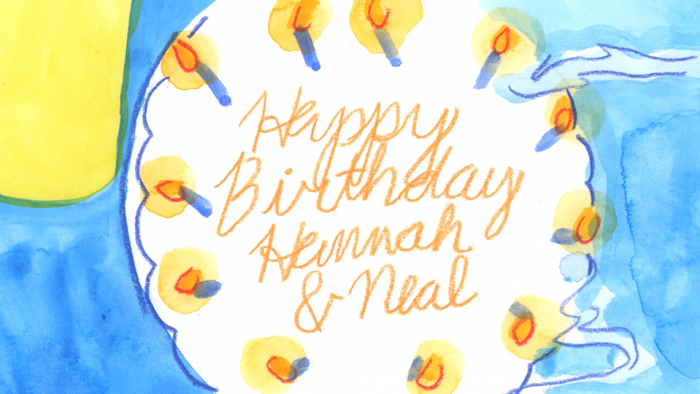
JC: Tell me more about your inspirations. Do you see anything today that reminds you why you want to be an animator? Why do you want to be an artist?
HS: Absolutely.
I have been lucky enough to help teach animation for a youth arts program at CalArts, since the first year I started there. I was part of that program in high school and teaching for it now is a wonderful full circle moment. It’s always amazing seeing what these kids can do at eight years old! Then, when you show them work that you love, and you see how they grasp on to that – that’s always super inspiring to me.
I also find inspiration constantly on social media and Pinterest too. Just seeing other people’s work is great. I will look at something and say, “That’s it!” and then I’ll pin it and I’ll have it there for later to remind me what’s energizing my creative brain.
JC: What are you working on now?
HS: It’s been really exciting being able to do this job at Duke and Duck. I am really invigorated by making work for other people now, and I really enjoy that. I think, especially after making such deeply personal work for so long, that I am just like, “Let me just not for a second and catch my breath.”
I am learning a lot by making work for other people. You have budgets, brand guidelines, and time restrictions. These are skills that I didn’t have to develop as much when I was at school.
In the future though… Especially since having gone to festivals now, people are always asking “What’s the next film?”
And I’m like “OH! It feels like I just finished this one!!”
JC: Sorry! I had to ask!
HS: No, it makes sense to ask me!
I also just started reconnecting with the seven and half siblings that I have across the country – because I was born with a sperm donor, I had two Moms growing up, and all of these siblings I didn’t know.
One of those siblings, Max, made the music for my film!
JC: Wow, that’s amazing.
HS: Right?!
It was this cool family connection that was happening. We had never met. We only had FaceTimed. And we still talk today.
Growing up knowing part of you is from someone you’ll never know is something I would want to talk about and explore. Because the whole idea of sperm donors in general has become a more recognized thing.
Max and I don’t know our sperm donor. He is totally anonymous. Which can be scary in some ways, like genetic health – we just don’t know!
Now there has been all this research, and it feels like a really great thing and set of emotions and attachments to capture in a project.
It could be a memory box for later – a memory of figuring it out.

